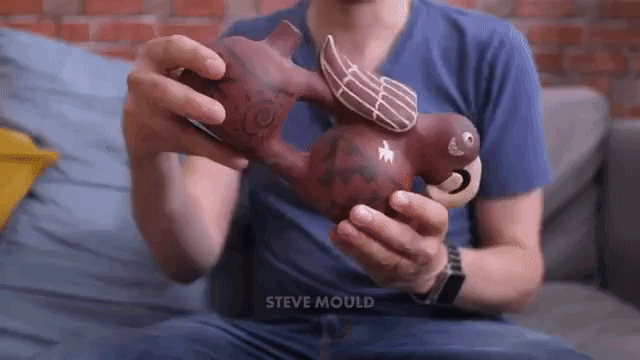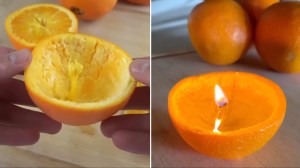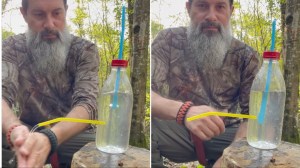Steve Mould, the amusing science vlogger and author, explored the physics behind warbling Peruvian whistling vessels using X-rays and other technologies.
My theory is that as you tip the thing, water moves from this compartment to this compartment. As this compartment fills with water, it forces air out through some kind of whistle that’s hidden inside the head. But if air is free to leave the vessel via the whistle, then surely as you tip the thing, you should just get a continuous whistling sound, but you don’t.
Mould really wanted to get a good look at what was going on inside the kettle. Rather than smashing it open, he turned to Creative Electron, a company in California that specializes in creative imaging. They were able to get remarkably clear images that Mould used for his video.
In addition to the images, Mould carefully cut one of them in half (to be glued back together later) and covered one half in clear plastic so he could watch how the water moved through the vessel. From there, he was able to make specific suppositions about how the distinctive warbling is achieved.
But anyway, in support of the hypothesis that a warbling sound requires a narrow channel through the whistle and a wide connecting pipe …actually, in the x-rays, you can compare the whistle parts and see that actually they seem to have very similar geometry. So it’s not a difference in the rate of flow of air. It’s a difference in surface tension effects in the connecting pipe.







